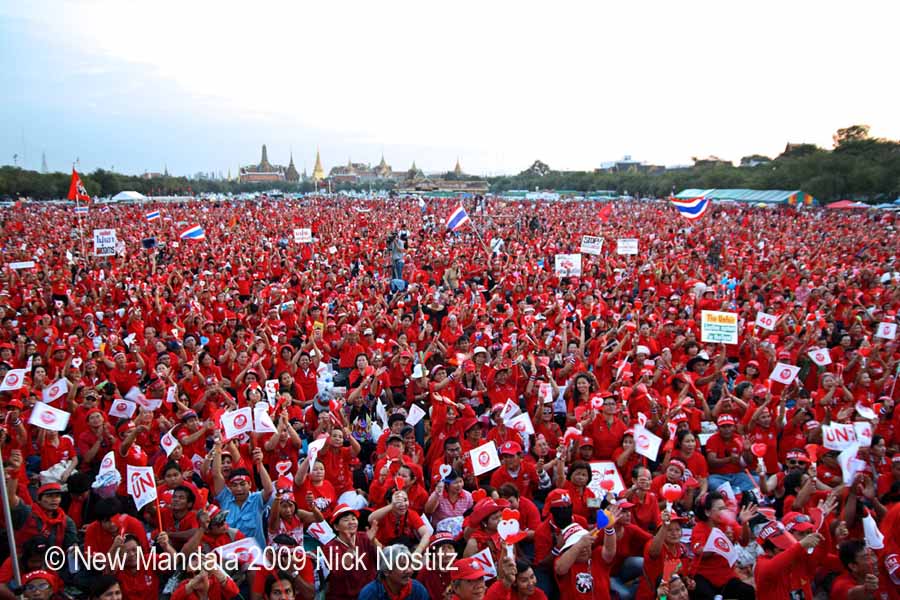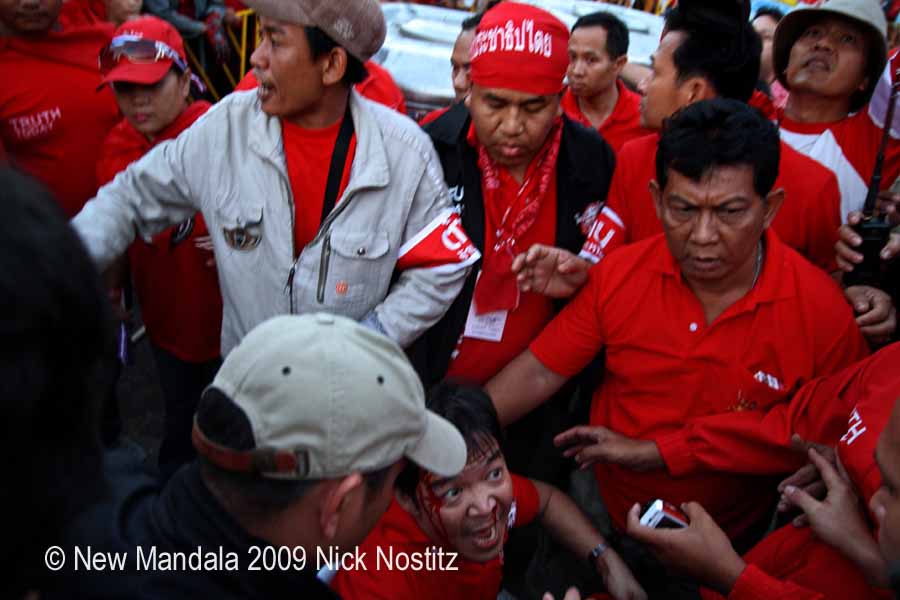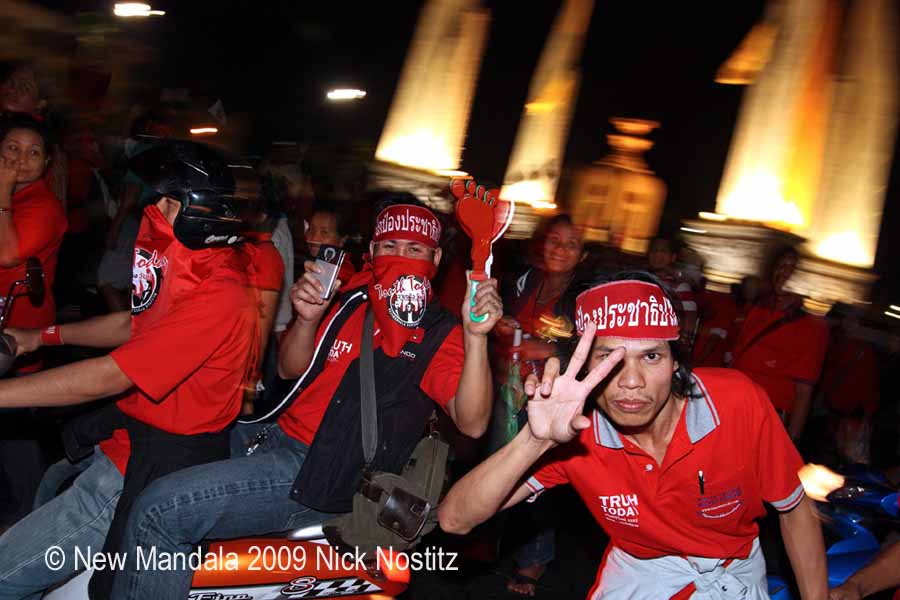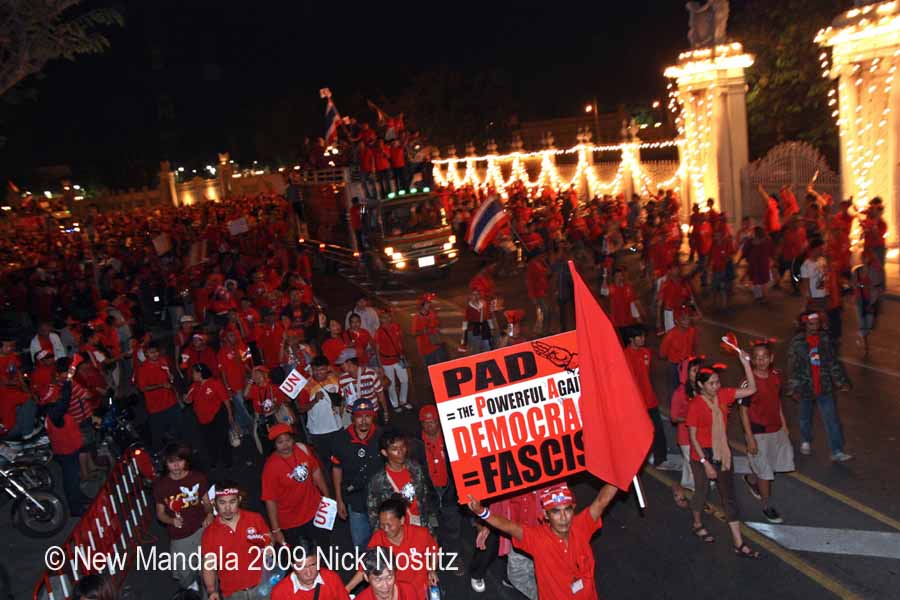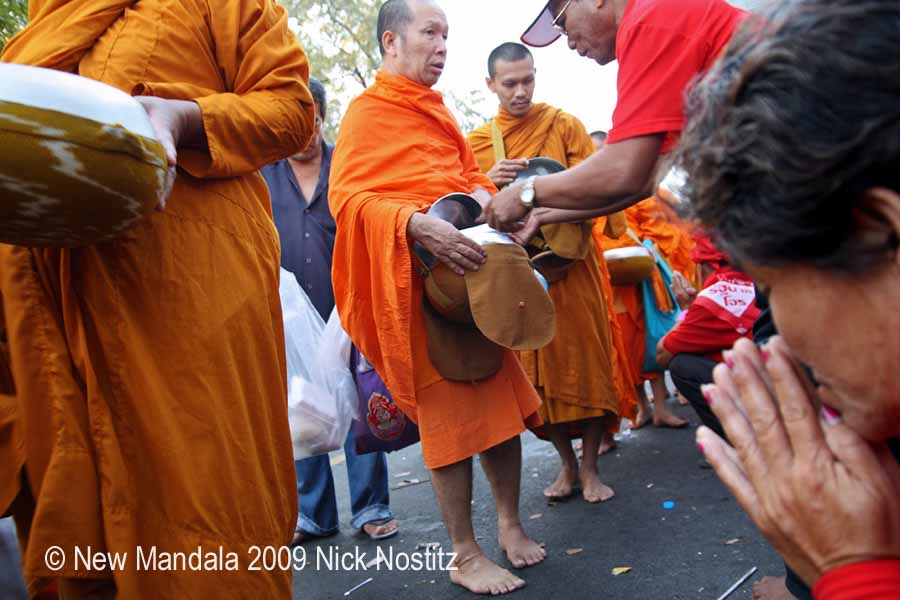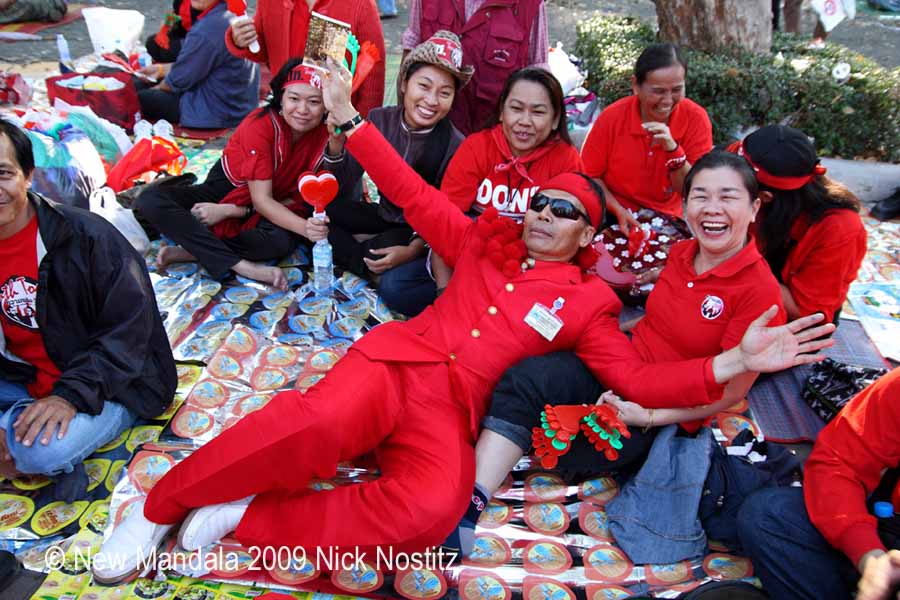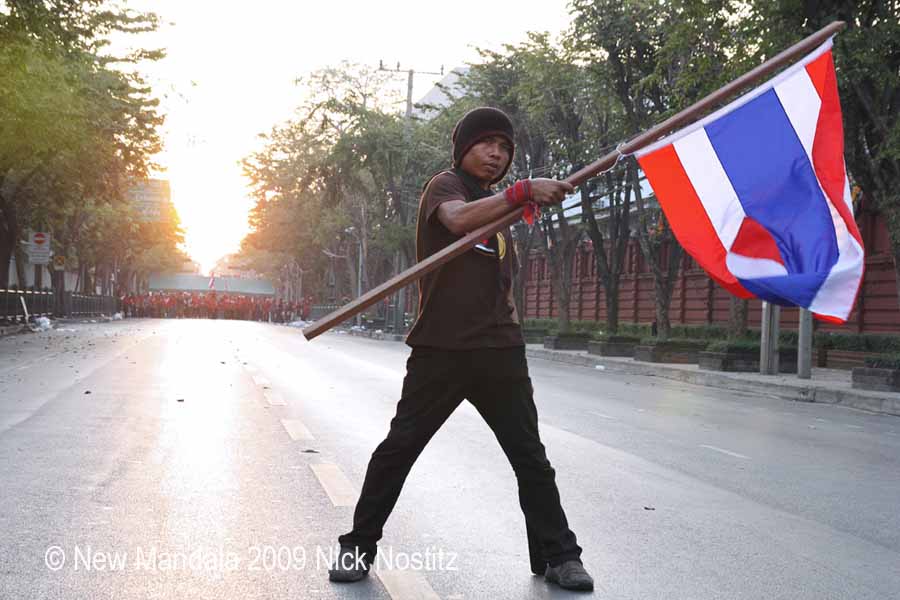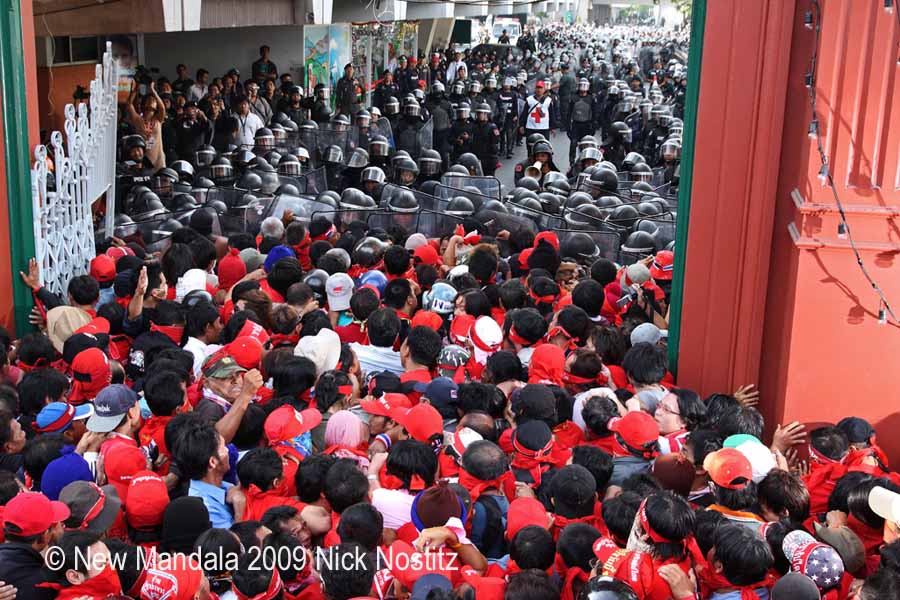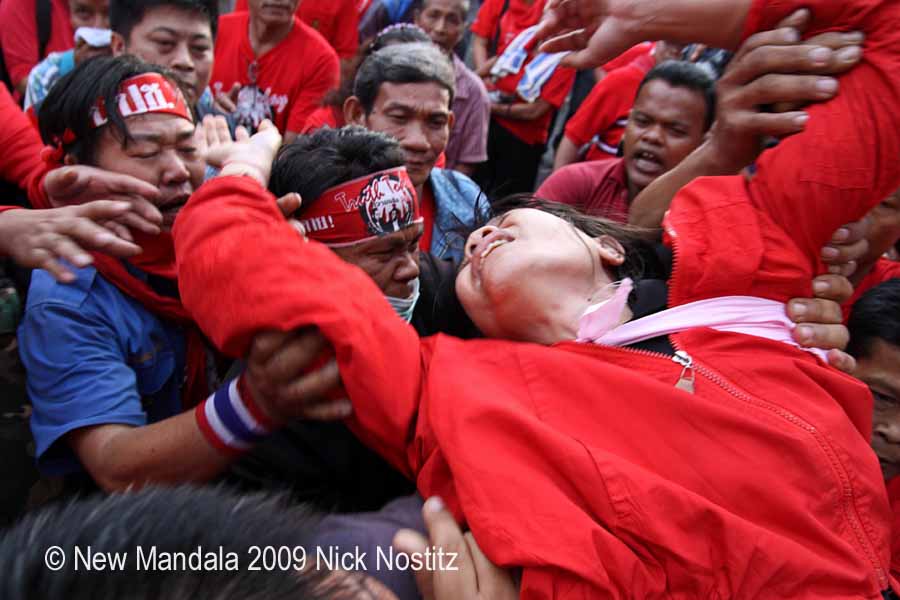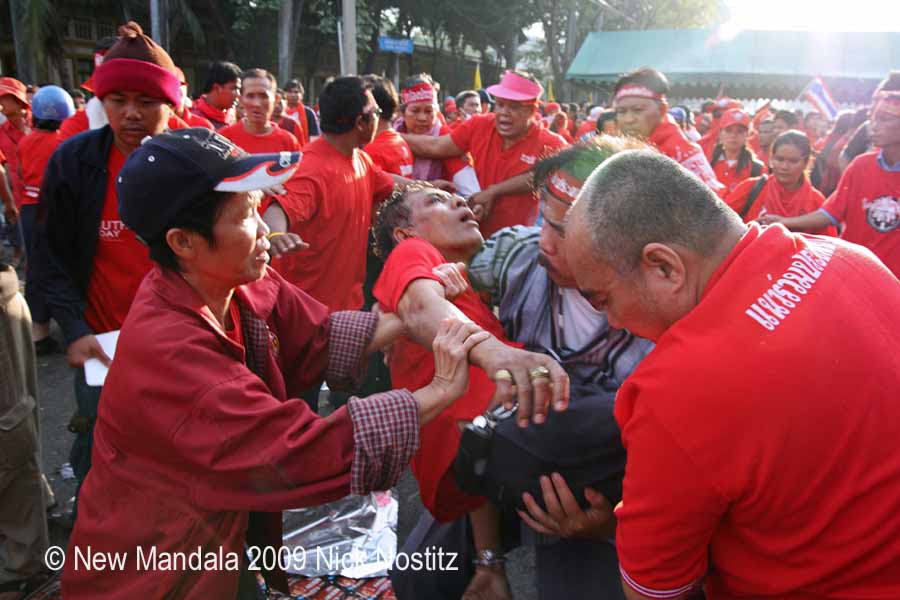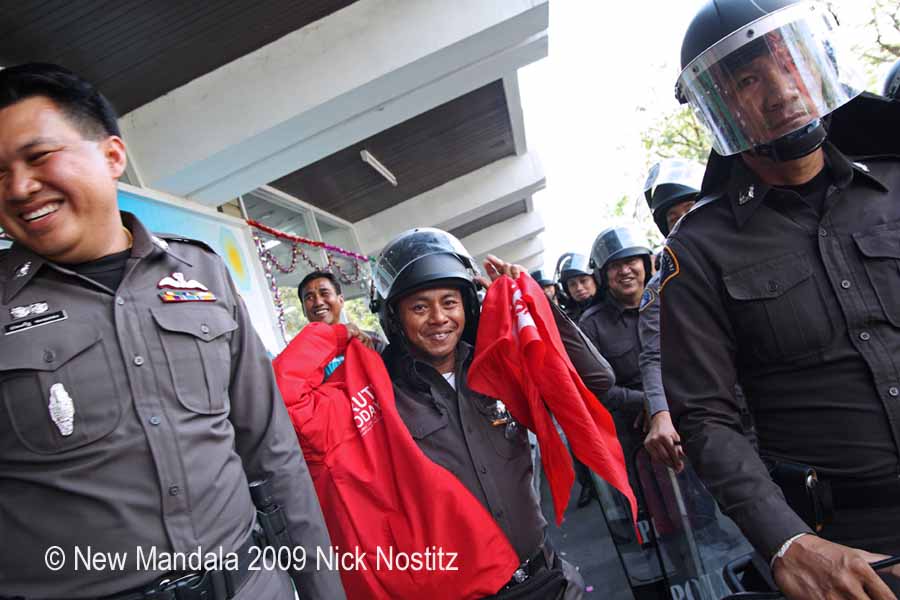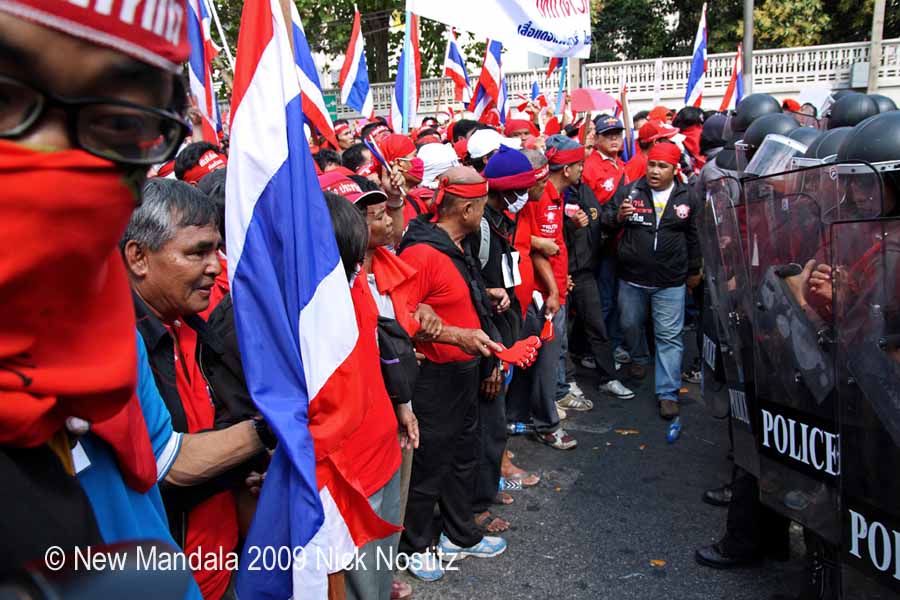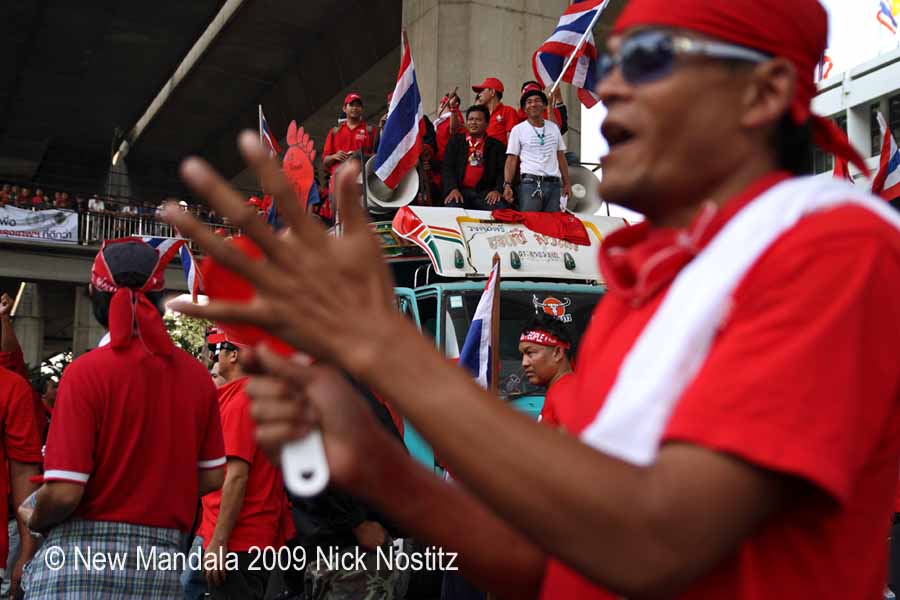It was a welcome change to be walking away from a street protest without a feeling of disgust and sadness; without feeling on edge from the mess that I had seen and photographed.
The last day of the Parliament siege by the Red Shirts saw a few lightly injured people. Most of them had fainted during the pushing at the side gate of Parliament when the police unsuccessfully tried to open it.
We know about the potential for violence in any street protest group, including the Red Shirts. Yet this protest was very carefully controlled by the Red Shirt leadership. Violent incidents were the absolute exception, and were immediately stopped by the leadership who were constantly at the frontline. The rhethoric on the stages was a careful balance of edging people on, humour and constant reminders to stay within the confines of the law. At night, Red Shirt leaders took turns singing songs on the stage. The protesters sang along and danced.
About 30,000 Red Shirts gathered at Sanam Luang
The first day, 28 December, saw two minor incidents. One was in front of Parliament when Red Shirt guards briefly fired slingshots at reporters (no injuries reported). The second incident was when one Red Shirt at Sanam Luang was slightly beaten up, most likely through a misunderstanding (he was accused of being a hired “third hand”). Guards straight away rushed to the scene and led the man behind the stage. He was quickly given first aid and then driven away to hospital.
It was reported that the night before the Sanam Luang meeting, Red Shirts who had already gathered at Parliament were harassed by PAD on motorcycles. However, this incident has not been independently confirmed.
A Red Shirt who was slightly beaten up was pulled out of the crowd and taken behind the stage, shielded by guards
The march to Parliament on the night of 28/29 December went without incident. Nor was there any incident on 29 December. The morning of 29 December started with several hudred monks gathering to receive alms from the protesters. Senators, civil servants and parliamentarians walked through the protesters and were allowed to enter the Parliament compound.
The eccentric Udon Thani MP, Soratin Pinmanmekin, appeared on stage and greeted the members of his Udon Thani constituency that had made their way to Bangkok. Soratin is a rather unique figure in Thai politics. He is a former Police Colonel, who has spent several years in a Lao prison, and who was injured in the clash between Red Shirts and PAD on 2 September 2008. He was in the front lines of the fight.
The march to Parliament
The march to Parliament
Monks receive alms from the Red Shirt protesters
Soratin Pinmanmekin in the crowd
Senators walk through the protesters
By the morning of 30 December it was clear that there would be an attempt to open the gate to Parliament. Police started building up on Ratchawithi Road, and also inside Parliament. The situation was slightly tense, but kept under tight control by the Red Shirt leadership. The picture was completely different from the scene on the morning of 7 October 2008 during the PAD siege. For the Red Shirt protests there were no barricades with barbed wire and booby traps, and protesters that carried sticks and iron bars were asked to lay them aside, so as not to give the police any pretence to attack with heavy force.
The morning of 30 December – no barricades
At about 8 AM, police tried to push open the gate from the inside. Protesters stopped the attempt by pushing the police back into the compound. Both Nattawut Saikua and Jakrapop Penkair were present at the lorry in front of the gate. They were less than ten meters away and had a clear view, so they could command and control the crowd. (Completely different from the PAD Parliament siege of 7 October, when the PAD leaders were inside Government House, more than a kilometer from the action.) As soon as a bottle flew, the Red Shirt leaders asked the protesters to refrain from doing so, saying that their protest had to stay within the law. One mother carrying her toddler was asked to step away from the gate, so that the child would not get injured.
After a few women fainted during the initial action, women were asked to leave the gate, and only unarmed men were asked to join. When protesters pushed police back into the compound, leaders on the stage commanded them to retreat, as their aim was not to invade Parliament.
Police and protesters push at the gate
A woman who fainted
A slightly injured protester is carried away to the waiting ambulances
After the fourth such action I slipped into Parliament when both police and protesters made way for a group of medics that was let through after rumours spread that a Red Shirt protester inside had a broken arm. (In fact, there was no such injury.)
The police inside were relaxed and very positive about the behaviour of the protesters as compared to when they encountered the PAD. A hilarious de-escalation tactic happened when the Red Shirts gave some of their paraphernalia through the gate to police officers. One officer who received Jakrapop’s jacket was particularly happy. After this, the mood was completely relaxed, both inside Parliament and outside.
One officer received Jakrapop Penkair’s jacket
A large group of protesters then made their way to the Ministry of Foreign Affairs. Another astonishing incident happened, when protesters met a police line. After brief negotiations, Red Shirts advanced, and police slowly retreated step by step. Protesters were reminded from the stage not to inflict even one scratch on the officers. One police officer with a whistle commanded the retreat of the line.
Protesters at the police line
Slow and orderly police retreat
The Red Shirts then commenced to move in an orderly manner to the Ministry of Foreign Affairs, in order to surround it. Soldiers along the way did not interfere and were only protecting the palace. At the Ministry no incidents to speak of happened. The Red Shirts hurled insults at Democrat MPs, and some MPs were seen jumping over the fence into a neighbouring construction site. Soon the Red Shirts retreated, and the day ended without any further incident.
Protester at the Ministry of Foreign Affairs
This form of protest should be commended and encouraged, and should get more media attention here in Thailand. If the Red Shirts continue to be demonized, belittled and labelled as paid stooges of Thaksin then this will only contribute to strengthening the more violent elements within the Red Shirt movement, and civil disobedience might turn into criminal disobedience. An example of this was the spontaneous gathering of about 200 Red Shirts without any of the leaders at Parliament on 15 December during the parliamentary election of Abhisit.
It is clear that the leadership of the Red Shirts have made tremendous efforts to change and improve the reputation of their movement. Thai media, Democrats and the so called independent organizations should start recognizing this fact. PAD might hurl accusations of lese majeste, but what we have seen during the last days of December was clear civil disobedience, as opposed to what we saw from the PAD in recent months since their decision to redefine non-violence.
 Facebook
Facebook  Twitter
Twitter  Soundcloud
Soundcloud  Youtube
Youtube  Rss
Rss 